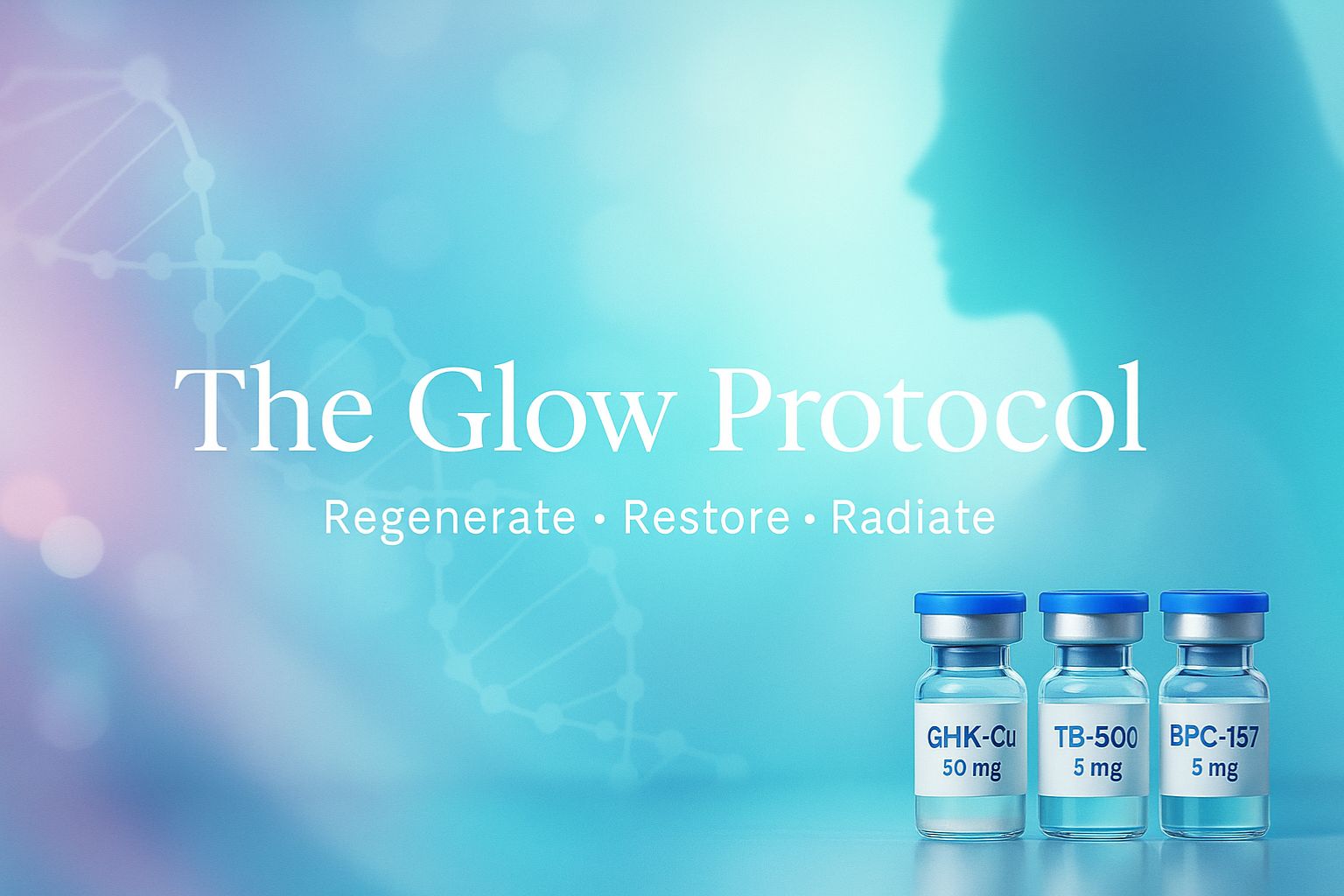The Glow Protocol is a research framework exploring three complementary peptide families — GHK-Cu, TB-500, and BPC-157 — within studies on cellular renewal, extracellular-matrix dynamics, and biological resilience. It examines three domains: Structure (collagen/ECM signaling), Traffic (cell migration & micro-circulation), and Protection (oxidative/inflammatory balance).
Research Focus of Each Peptide
GHK-Cu — Matrix & Signaling: studied for collagen organization, gene-expression modulation, and cellular vitality pathways. TB-500 — Motility & Micro-Vascular: examined for cell migration, angiogenesis, and cytoskeletal reorganization. BPC-157 — Stability & Resilience: investigated for multi-tissue integrity and homeostatic balance in preclinical models.
Why Combine Them? (Conceptual Stack)
| Domain | Primary Research Focus | Representative Peptide |
|---|---|---|
| Structure | Collagen / ECM gene signaling | GHK-Cu |
| Traffic | Cellular migration & angiogenic modulation | TB-500 |
| Protection | Systemic stress & redox balance | BPC-157 |
Typical Research Design
Time-defined observation windows (e.g., 4–8-week laboratory studies) followed by reassessment are common in experimental literature. Maintaining a consistent relative ratio among compounds supports comparability and reproducible data collection. (For study-design discussion only; not dosing guidance.)
Evidence, Regulation & Ethics
Evidence maturity: largely preclinical with limited peer-reviewed human data.
Regulatory context: not approved therapeutics; studied as research materials only.
Responsible conduct: follow institutional and national biosafety protocols. {/accordion} {accordion title="Summary"} The Glow Protocol is an experimental model to examine synergy between structure (GHK-Cu), mobility (TB-500), and stability (BPC-157), with emphasis on mechanistic insight, reproducibility, and data integrity — not therapeutic application.
All information is provided for laboratory, educational, and research reference only. Compounds are not approved for human or veterinary use. Any therapeutic or medical interpretation falls outside the intended scope of this material.


